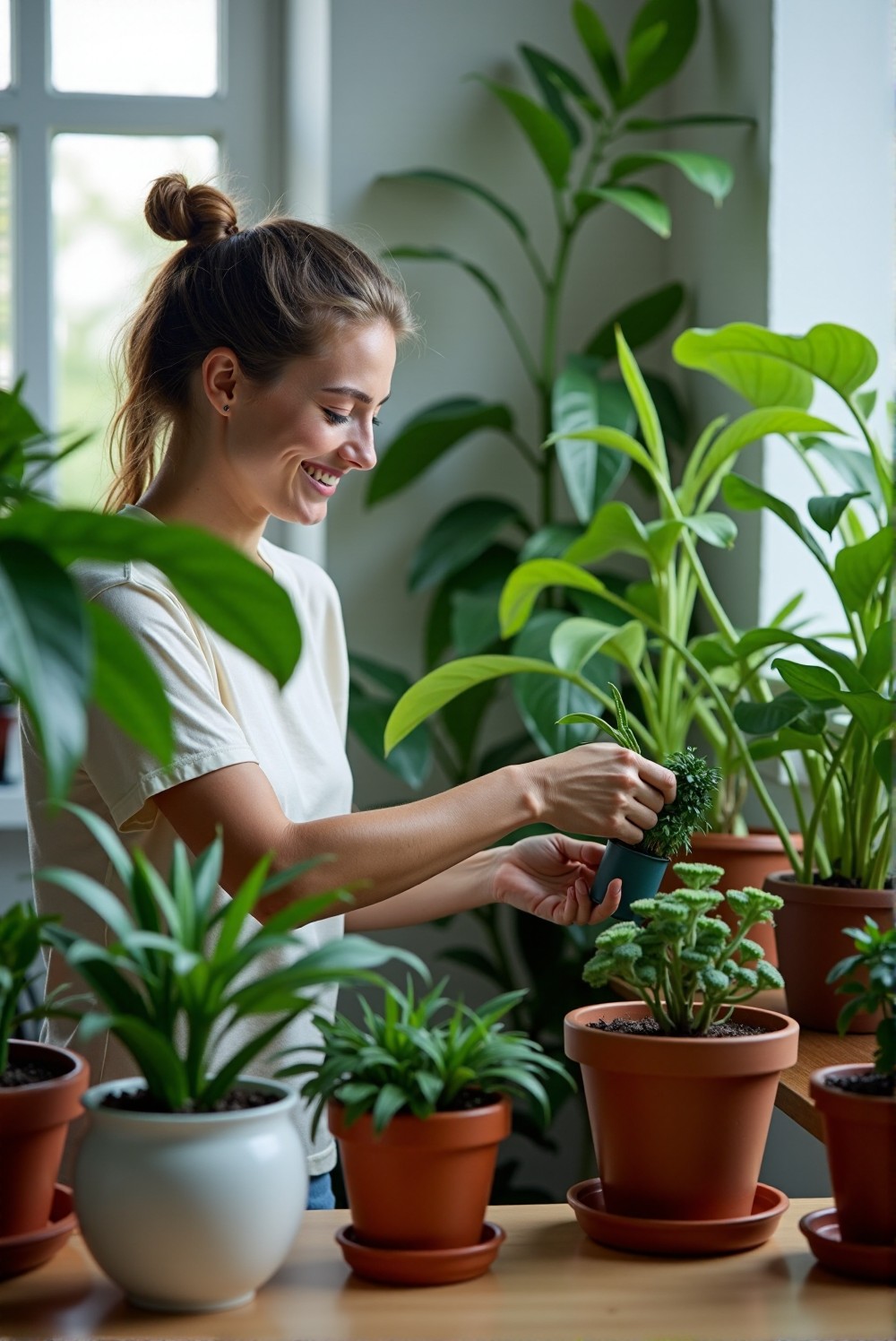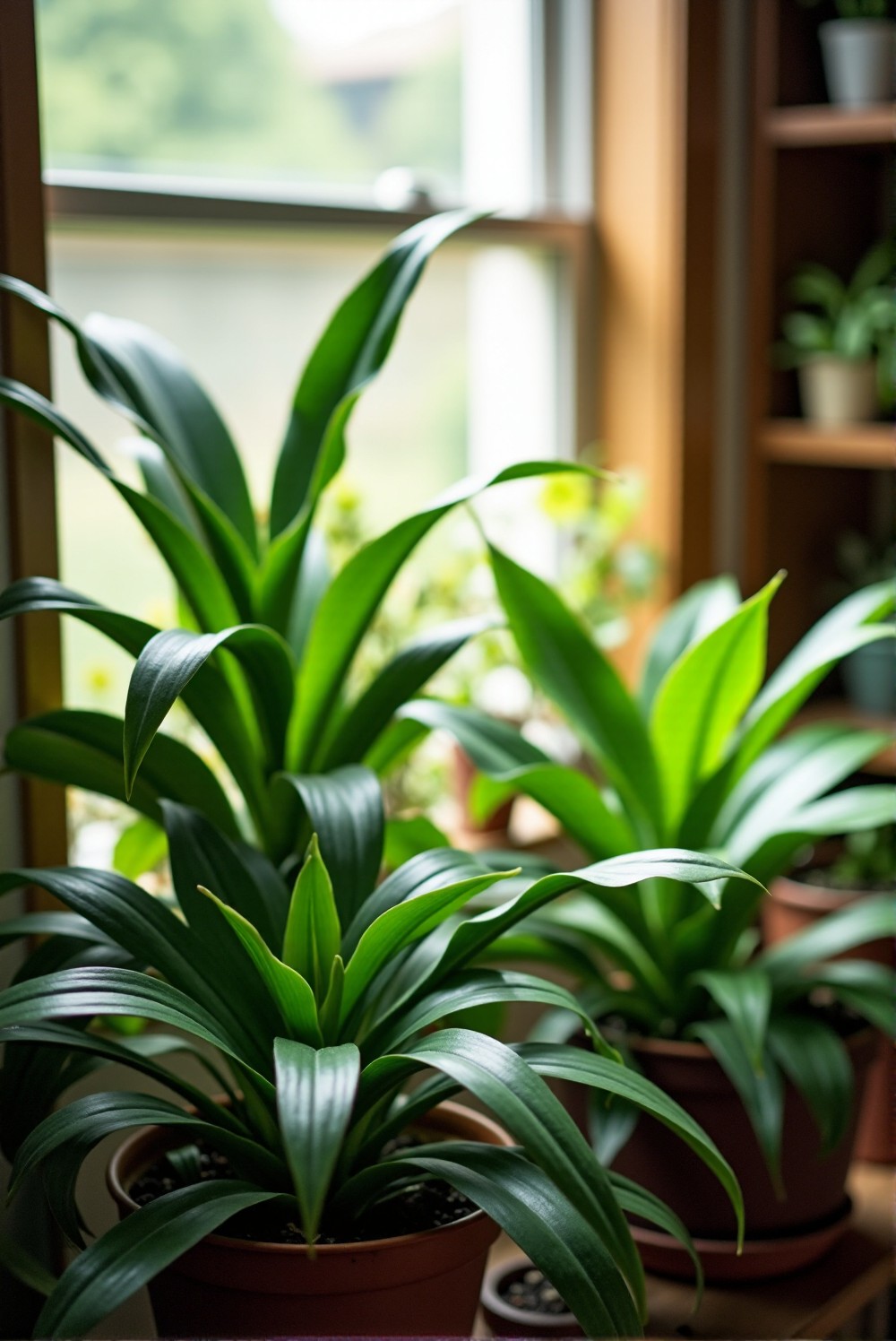
House plants are becoming more popular in homes everywhere, and for good reason! They can add beauty and life to any space while helping to purify the air and improve our mood.
However, there are many myths about house plants that might make people hesitate to bring them into their homes. Some believe they are too tricky to care for, while others think they all purify the air equally well.
In this post, we will explore and debunk some of these common misconceptions to help you make informed choices about house plants. Whether you’re a seasoned plant parent or just starting out, understanding the facts can make your experience more enjoyable.
1. House Plants Are High Maintenance

Many people think house plants require a lot of effort to keep alive. While it can seem that way, not all plants are as hard to care for as they seem.
House plants can be easier to care for than many people think. Below is a table showing some popular house plants along with their care requirements to help you choose the right ones for your space.
| Plant Name | Light Requirements | Watering Frequency | Difficulty Level |
|---|---|---|---|
| Snake Plant | Low to bright indirect light | Every 2-6 weeks | Easy |
| Pothos | Low to bright indirect light | Every 1-2 weeks | Easy |
| Spider Plant | Bright indirect light | Every 1-2 weeks | Easy |
| ZZ Plant | Low to bright indirect light | Every 2-3 weeks | Easy |
| Peace Lily | Low to medium indirect light | Every week | Moderate |
| Fiddle Leaf Fig | Bright indirect light | Every 1-2 weeks | Moderate |
Some plants thrive on minimal attention. For example, succulents and snake plants are excellent choices for those who want green companions but don’t have a lot of time to spend on upkeep.
They are generally forgiving and can survive in less-than-ideal conditions.
However, certain types do require specific conditions.
They may need plenty of sunlight, a special type of soil, or frequent watering. If you choose these types, you’ll find yourself checking on them regularly.
This might feel like a lot of work compared to low-maintenance options.
Furthermore, pests can be a concern.
Insects can invade plants, leading to additional care needs. If not monitored, these issues can turn into bigger problems.
On the flip side, keeping an eye out for pests can be a good learning experience.
In reality, some plants just need the right match of care and conditions.
By choosing wisely, you can enjoy house plants without feeling overwhelmed by demands. It’s all about finding the right balance for your lifestyle and preferences.
2. All House Plants Purify the Air

Not every house plant is a champion of air purification. While some greens do filter out toxins and improve air quality, others might not be as effective.
Factors like the type of plant, its size, and how many are in your space all play a role in air cleansing abilities.
Certain plants are known for their superior air-cleaning skills.
For example, spider plants and peace lilies are often highlighted for their ability to absorb pollutants. In contrast, other plants might not have the same level of benefit.
To see real results, it’s essential to have a variety of plants. A single plant may not make a substantial difference, but a collection can significantly enhance air quality.
More plants mean more surfaces to absorb indoor air pollutants.
Moreover, learning about the different air purification strengths of various plants can help you choose wisely.
This way, your living space can be both beautiful and beneficial for your health.
Ultimately, while many house plants contribute positively, they are not a magical solution for air purification.
For the best results, pairing plants with good ventilation and regular cleaning is important.
Maintaining healthy plants requires a combination of proper care methods. Here are some key points to consider:
- Ensure proper air circulation around plants to promote growth and prevent mold.
- Conduct regular cleaning of plant leaves to remove dust and pests.
- Monitor humidity levels, as excessive moisture can lead to fungal issues.
- Use pots with drainage holes to prevent water buildup and improve airflow.
- Place plants in areas with sufficient natural light to support their overall health.
3. House Plants Can Survive in Low Light

Many people believe that all house plants need bright sunlight to thrive, but that is not true. Some plants are well adapted to low light conditions.
These plants have evolved to grow in the shadows of larger plants or in places with less sun exposure. They can survive with minimal natural light, making them perfect for homes with few windows or dim rooms.
Popular choices for low light situations include the snake plant, ZZ plant, and pothos. These greenery options can flourish even in darker corners of your home.
When looking to add greenery to areas with limited light, consider these resilient houseplants that thrive in low light conditions. Here are some top choices:
- Snake Plant: Known for its ability to survive in low light and requiring minimal care, this plant has striking upright leaves.
- ZZ Plant: This hardy plant is virtually indestructible and thrives in indirect light, making it perfect for dim areas.
- Pothos: With its cascading vines, pothos can adapt to various lighting conditions and is easy to propagate.
- Cast Iron Plant: True to its name, this plant is tough and can withstand neglect, low light, and fluctuating temperatures.
- Philodendron: Popular for its heart-shaped leaves, philodendrons do well in low light and are great for both beginners and experienced plant parents.
They have special features that allow them to photosynthesize efficiently, even when sunlight is limited. Their ability to survive in low light makes them great for beginners or anyone who might forget to move them into brighter areas.
However, even low-light plants need some care. Keeping them healthy means ensuring they get the right amount of water and occasional attention.
If overwatered or neglected, they could still face issues, like root rot. Therefore, understanding their needs is key to their survival, even in low-light environments.
By choosing the right plants, you can enjoy greenery in your home without worrying about them needing constant sunlight. House plants that do well in low light can enhance your living spaces and even brighten up darker areas.
They serve as lovely decorations and can make indoor spaces feel more inviting!
Frequently Asked Questions
Here are some frequently asked questions about house plants and their care, along with helpful insights to debunk common myths and guide your choices.
Are house plants really high maintenance?
Many people believe that house plants require a lot of effort to keep alive, but this is not universally true.
While certain varieties may need specific conditions and regular care, many plants, like succulents and snake plants, are quite low maintenance.
By choosing the right plants for your lifestyle, you can enjoy the benefits of greenery without feeling overwhelmed.
Do all house plants purify the air?
Not every house plant is effective at purifying the air. Some plants are well-known for their air-cleaning abilities, while others do not contribute significantly.
Factors like the type of plant and the number of plants you have in a space influence their air filtration effectiveness.
To improve air quality, it’s recommended to have a variety of plants and create a clean, well-ventilated environment.
Can house plants survive in low light?
While many people think all house plants need bright light, this is a misconception.
There are plants, such as snake plants and ZZ plants, that thrive in low light conditions, making them suitable for homes with limited natural sunlight.
However, even low-light plants need proper care, including the right water levels, to prevent issues like root rot.
What are the best low-maintenance house plants?
Some excellent low-maintenance options include the snake plant, pothos, and ZZ plant.
These plants are known for their hardiness and ability to thrive on minimal care and attention.
Choosing these varieties can be ideal for those who may forget to tend to their plants frequently.
How should I take care of my house plants?
House plant care involves understanding the specific needs of each plant, including light, water, and humidity levels.
For optimal growth, ensure proper air circulation and regular cleaning of leaves to remove dust.
Additionally, using pots with drainage holes and placing plants in areas with suitable natural light will help maintain their health.
What should I do if my house plants attract pests?
If pests are an issue, regular monitoring is key to preventing infestations.
It’s helpful to check the plants periodically for signs of pests and take action immediately if you see any issues.
Many pests can be managed with simple treatments or natural remedies, and addressing the problem early can prevent significant damage.
Conclusion
Understanding the myths about house plants can help you become a better plant parent. By choosing the right plants for your home, you can enjoy greenery without feeling overwhelmed.
Whether you’re looking for low-maintenance options, hoping to purify your air, or finding plants that thrive in low light, there’s a perfect match for everyone. With just a little knowledge, you can create a vibrant living space filled with healthy and happy plants.